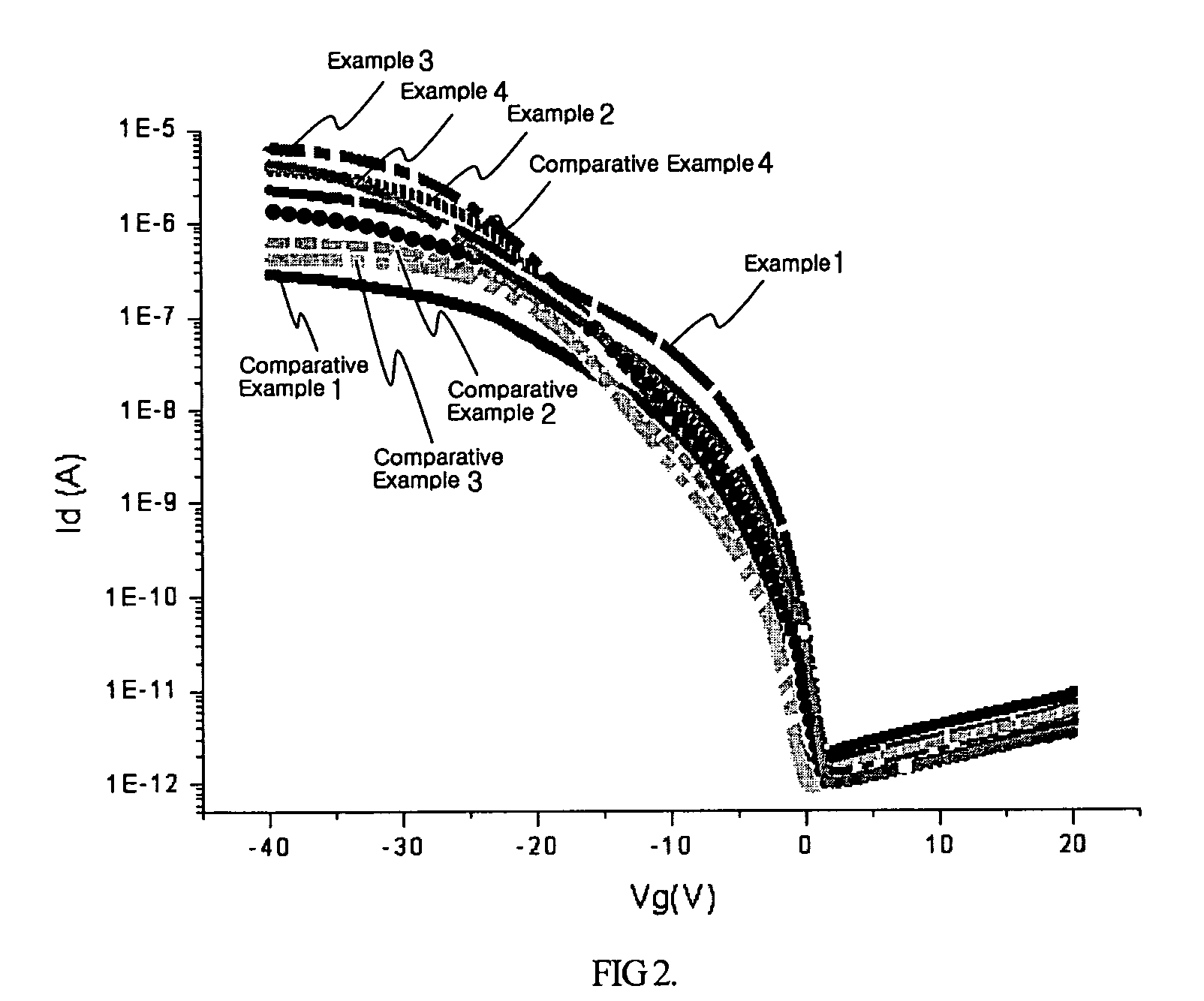Organic thin film transistor(s) and method(s) for fabricating the same
a thin film transistor and organic technology, applied in the direction of thermoelectric device junction materials, electrical apparatus, semiconductor devices, etc., can solve the problems of low high driving voltage and/or high threshold voltage in comparison with silicon thin film transistors, and unsatisfactory charge carrier mobility of organic thin film transistors, etc., to achieve improved electrical properties, higher charge carrier mobility, and higher work function
- Summary
- Abstract
- Description
- Claims
- Application Information
AI Technical Summary
Benefits of technology
Problems solved by technology
Method used
Image
Examples
example 1
[0103] Al was deposited on a clean glass substrate by a sputtering technique to form a gate electrode having a thickness of 1,500 Å. Polyvinylphenol containing a crosslinking agent was spin-coated thereon at 1,000 rpm to a thickness of 5,000 Å, and soft-baked at 100° C. for 5 minutes to form a gate insulating layer. ITO was deposited on the insulating layer to a thickness of 1,000 Å by a thermal evaporation method, and was then subjected to photolithography to form an ITO electrode pattern. At this time, the deposition was conducted under a vacuum pressure of 2×10−7 torr, a substrate temperature of 50° C. and at a deposition rate of 0.85 Å / sec. Subsequently, the ITO electrode was surface-treated by impregnating it with a self-assembled monolayer forming solution at room temperature for 30 minutes. The self-assembled monolayer forming solution was prepared by dissolving 5 wt % (based on a total weight of the solution) of a perfluorinated resin solution (Nafion®, Aldrich) in a mixed s...
example 2
[0106] An organic thin film transistor was fabricated in the same manner as in Example 1, except that the surface of the ITO electrode was acid-treated with an ITO etchant (HCl—16.7-20.3% in water) at room temperature for 10 seconds.
example 3
[0107] An organic thin film transistor was fabricated in the same manner as in Example 1, except that the surface of the ITO electrode was subjected to UV ozonation using a lamp having a power of 0.28 W / cm3 at a wavelength of 254 nm for 3 minutes, prior to the surface treatment of the ITO electrode.
PUM
 Login to View More
Login to View More Abstract
Description
Claims
Application Information
 Login to View More
Login to View More - R&D
- Intellectual Property
- Life Sciences
- Materials
- Tech Scout
- Unparalleled Data Quality
- Higher Quality Content
- 60% Fewer Hallucinations
Browse by: Latest US Patents, China's latest patents, Technical Efficacy Thesaurus, Application Domain, Technology Topic, Popular Technical Reports.
© 2025 PatSnap. All rights reserved.Legal|Privacy policy|Modern Slavery Act Transparency Statement|Sitemap|About US| Contact US: help@patsnap.com



